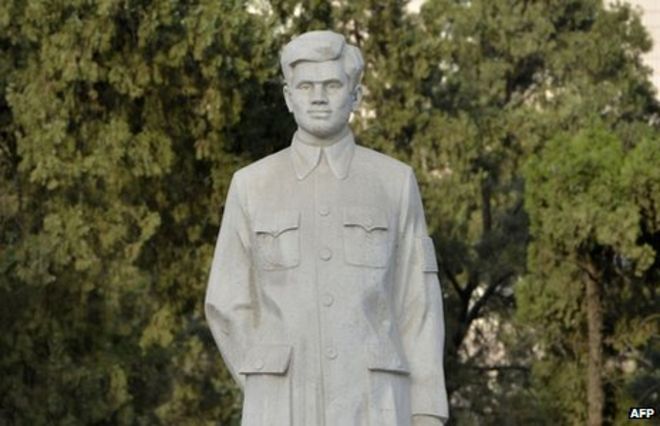
The Indian doctor revered by a foreign country but little known in India
That Dr Dwakaranath S Kotnis is held in high esteem by another nation can be seen by the fact that every time a Chinese leader pays a visit to India, it’s usual for him/her to meet the family of the Indian doctor.
Dr Kotnis was sent to China as part of a medical mission from India in 1938. This was done in the aftermath of the invasion of China by the Japanese. Many are the lives of Chinese soldiers that were saved by the doctor who served on the frontline.
Tragically though, after just four years serving in China, the doctor fell ill and died- he was just 32.
But before that, Dr Kotnis had married the love of his life- a Chinese nurse who worked alongside him. Her name was Quo Qinglan. After the doctor’s demise, she remained in China. Quo too passed away in 2012 in the Chinese city of Dalian. The couple had a son who too was claimed by death at a young age-24 to be precise when he was learning to become a doctor.
Following Dr. Kotnis’ death, Mao Zedong reportedly said, “The army has lost a helping hand, the nation a friend. Let us always bear in mind his international spirit.”
A hero for the Chinese
As recently as 2013, when the Chinese Premier Li Keqiang came down to India he visited the doctor’s family who live in Mumbai. He was received by Manorama Kotnis, the doctor’s 92 year old sister of the doctor. “We are overwhelmed that even after so many years, my brother is remembered and loved by the Chinese and that the premier is taking pains to meet us,” she had told a media publication at the time.
But in India, Dr Kotnis remains a little-known figure, even despite the fact that a film was made in 1946 about him.
However, in China., he gets the accolade of a hero even today. They have printed stamps with his picture and there exists even a memorial in the Hebei province. The doctor’s enduring popularity is shown by the fact that he was among the “top 10 foreigners” as per an internet poll in 2009 which looked at friendly foreigners for the century.
Homage by the Chinese goes beyond politics
The endurance of the Chinese’ reverence of Dr Kotnis goes beyond the current ethos of political relation. Not only are India and China rivals on the economic front, but strains over the border they share are also not unusual.
In this context the high esteem with which Dr Kotnis is held by the Chinese- which they make only too evident could be seen as a continuing ode to shared history of anti imperial struggles and bonhomie.
For instance, when Rabindranath Tagore visited China in 1924, the man of letters spoke about how he admired the country’s “wisdom”, “touch of the human” and “its world of beauty.” The poet pointed out the need for “eternally revealing a joyous relationship unforeseen” between the two nations.
Later, in 1940 Mao wrote to Jawaharlal Nehru saying how the emancipation of both the Indians and the Chinese would signal the freedom of all down-trodden and oppressed.
Mahatma Gandhi too understood the synonymous positions held by India and China in their fight against imperialism. In 1942, Gandhi wrote to Chiang Kai-shek, the then Chinese leader that he “”always felt drawn towards you in your fight for freedom, and that contact and our conversation brought China and her problems still nearer to me”.
Medicine is one field of human endeavor that is universal in that it deals with saving lives-regardless of race, creed and other divisions. On this regard, it’s quite fitting that the homage to a shared past can be seen in how respect is shown by one nation to a medical professional from another.
Image credits: bbc.com